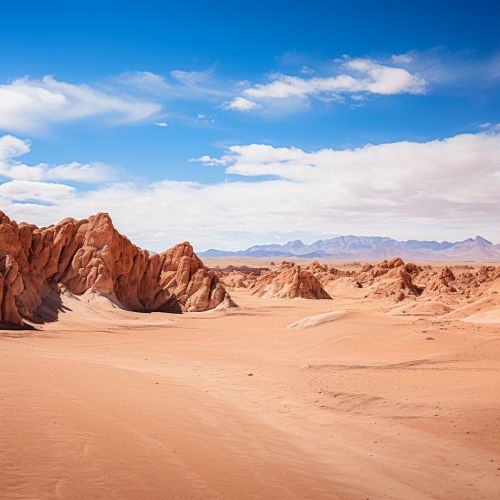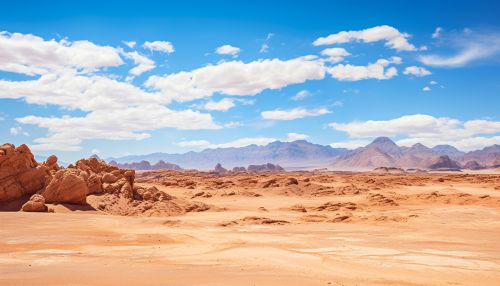Atacama Desert
Geography
The Atacama Desert is a plateau in South America, covering a 1,600 km (990 mi) strip of land on the Pacific coast, west of the Andes mountains. The desert is composed mainly of salt lakes (salares), sand, and felsic lava that flows towards the Andes.


Climate
The Atacama Desert is known as the driest nonpolar place in the world, especially the surroundings of the abandoned Yungay town. The average rainfall is about 15 mm (0.6 in) per year. Some weather stations in the Atacama have never received rain. Evidence suggests that the Atacama may not have had any significant rainfall from 1570 to 1971.
Flora and Fauna
Despite the harsh conditions, a variety of flora and fauna species have adapted to survive in the Atacama Desert. The flora includes species such as the Llareta, a flowering plant that resembles moss, and the Tamarugo tree, which is capable of surviving in the desert's poor soil conditions. Fauna includes species such as the Vicuna, the smallest camel in South America, and the South American Gray Fox.
Human History
The Atacama Desert has been inhabited by various cultures since prehistoric times. The Atacamenos people, also known as the Kunza, were the first known major culture, followed by the Inca Empire, and then the Spanish in the 16th century. Today, the desert is sparsely populated, with most inhabitants living in mining towns or oasis communities.
Mining and Economy
The Atacama Desert is rich in mineral resources, notably copper and nitrates. Many of the world's major mining companies have operations in the region. The desert's economic importance has grown over the years due to the increasing global demand for copper and lithium.
Astronomy
Due to its high altitude, nearly non-existent cloud cover, dry air, and lack of light pollution and radio interference from the very widely spaced cities, the Atacama Desert is one of the best places in the world to conduct astronomical observations and has been the site of numerous observatories.
Environmental Concerns
Environmental concerns associated with mining and other human activities in the Atacama Desert include water scarcity, air and soil pollution, and the impact on local flora and fauna. These issues have led to increased regulation and the implementation of sustainable practices in the region.
